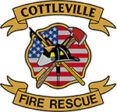 Facts about home heating fires
Facts about home heating fires
- From 2010-2012, an average of 45,200 home heating fires occurred in the United States each year and resulted in an annual average of approximately 155 deaths, 625 injuries and $351 million in property loss.
- Heating was the second leading cause of home fires following cooking.
- Home heating fires peaked in the early evening hours between 5 and 9 p.m. with the highest peak between 6 and 8 p.m. This four-hour period accounted for 30 percent of all home heating fires.
- Home heating fires peaked in January (21 percent) and declined to the lowest point during the summer months from June to August.
- Confined fires, those fires confined to chimneys, flues or fuel burners, accounted for 84 percent of home heating fires.
- Twenty-nine percent of the nonconfined home heating fires occurred because the heat source was too close to things that can burn.
Source: https://www.usfa.fema.gov/prevention/outreach/heating.html
Heating safety tips

Heating equipment is a leading cause of home fire deaths. Half of home heating equipment fires are reported during the months of December, January, and February. Some simple steps can prevent most heating-related fires from happening.
- Keep anything that can burn at least three feet away from heating equipment, like the furnace, fireplace, wood stove, or portable space heater.
- Have a three-foot “kid-free zone” around open fires and space heaters.
- Never use your oven to heat your home.
- Have a qualified professional install stationary space heating equipment, water heaters or central heating equipment according to the local codes and manufacturer’s instructions.
- Have heating equipment and chimneys cleaned and inspected every year by a qualified professional.
- Remember to turn portable heaters off when leaving the room or going to bed.
- Always use the right kind of fuel, specified by the manufacturer, for fuel burning space heaters.
- Make sure the fireplace has a sturdy screen to stop sparks from flying into the room. Ashes should be cool before putting them in a metal container. Keep the container a safe distance away from your home.
- Test smoke alarms monthly.
